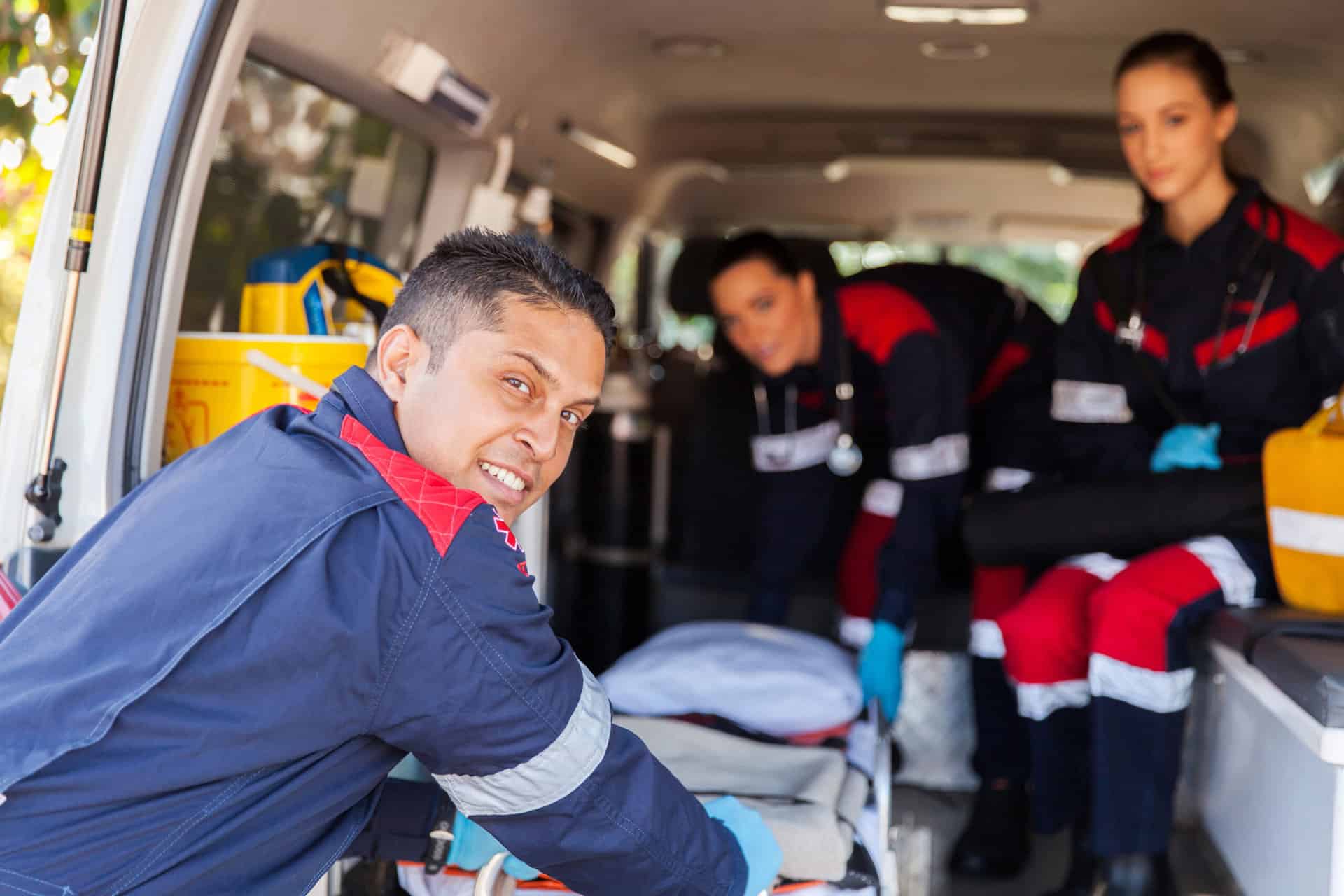Are you a fit?
Do you work well under pressure? Can you exercise critical thinking skills? Do you have situational awareness? EMTs are medical professionals who work for health care facilities and arrive on the scene of emergency situations to provide basic life support and patient care. They’ll work closely with Paramedics and other emergency medical personnel to assess the situation and provide care for the patient until arriving at the hospital. EMTs may also assist other health care personnel in administering advanced life support to patients in need. Many Emergency Medical Technicians are trained to drive the emergency vehicles in a safe but efficient manner to the emergency medical facility. When they arrive at the hospital, the EMT is responsible for explaining the situation to hospital staff and relaying the patients’ vitals. They must fill out patient reports after caring for a patient.
Description
An EMT, or Emergency Medical Technician, responds to emergency situations by stabilizing patients before taking them to a medical care facility. Their main duties include transporting patients to hospitals, driving emergency vehicles safely and responsibly and quickly responding to calls made by Dispatchers.
EMTs respond to emergencies and provide an appropriate level of care, which in many cases involves lifesaving treatment. EMTs also frequently respond to traumatic injuries, such as gunshot or stab wounds and injuries sustained from serious car crashes. Other essential duties and responsibilities for an EMT include:
- Provide first-aid treatment, such as bandaging wounds.
- Provide life support care, such as cardiopulmonary resuscitation (CPR), when needed.
- Assess a patient’s conditions and provide initial treatment.
- Determine whether a patient needs to go to an ER or a trauma center.
- Work 12-hour shifts, sometimes staying on call for 24 hours.
- Communicate with other emergency services, such as firefighters and police officers, to respond to calls for help.
An EMT must meet several requirements in terms of education, training and certifications. To become an EMT or paramedic, you need a basic EMT certification. This requires six months to two years of studying, and candidates must complete national and/or state exams to become certified. Basic first-aid certifications, like a CPR certification, are also required. They usually have completed a two-year associate’s degree, though some candidates may have a bachelor’s or some college or university experience.
Additional Requirements:
CPR Training
- 6 months to 3 years of an EMT program (time depends on specialization and program)
- Pass the cognitive exam, NREMT
- Pass the psychomotor exam
